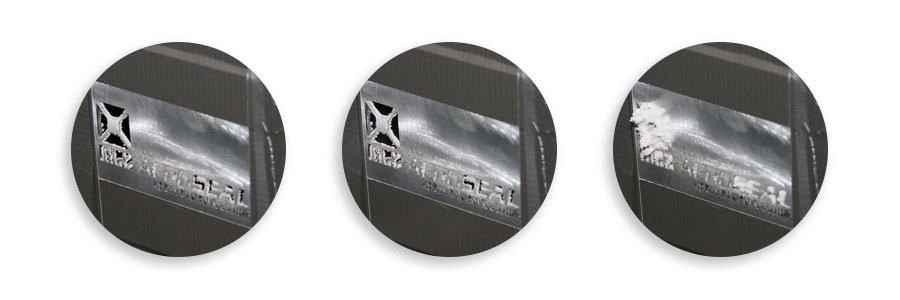
Technology
What makes AEROSEAL® different from other technologies?
The AEROSEAL® technology is unique in its way, as it really only seals the areas that show leaks. The rest of the air duct system remains untouched and in its conventional state, and is not covered with some kind of sealant as is the case with other methods. Rather, the AEROSEAL® technology uses the physical properties of a leak to its advantage by using the punctual pressure drop to transport the smallest particles of sealant with the help of the air flow through the air duct system to the leaks and seal them successively.
With the help of this condition, one leakage after the other is sealed and reliably closed. A corresponding check on the current state of leakage in the air duct system is carried out by means of our AEROSEAL® equipment and associated software.
Other features of these innovative technologies are that they can be used without major disruption during "normal" everyday life, the sealant complies with the requirements of hygiene guidelines and only two service technicians are usually required for the application itself, which in turn results in low personnel and cost requirements.
Where does the AEROSEAL® technology come from?
The patented AEROSEAL® technology was developed in the 1990s at the University of Berkeley, California. In the United States, the technology was initially used primarily in residential buildings, and only later in commercial properties. Since then, over 125,000 projects worldwide have been sealed with the help of AEROSEAL®.
Since 2015, we have been the exclusive distributor of this technology in Europe and have since built up a network of now 34 certified AEROSEAL® partners. Together with these partners and the direct contact to the manufacturer in the USA, we have successfully completed every project.
How does the AEROSEAL® technology work?
In comparison to conventional sealing methods, the leaks do not have to be searched for and sealed in a time-consuming process. Instead, the AEROSEAL® method reliably seals leaks from the inside. For this purpose, a corresponding hygienically safe sealant is atomised into the smallest particles with the help of heat and pressure and passed through the air duct system together with the air flow.
At the leaks in the air duct system, the pressure drops locally, causing the air to be redirected towards the cracks, crevices and holes and to flow through them from the inside to the outside. In the process, tiny amounts of sealant are deposited on the edges of the leaks and permanently seal leaks up to a diameter of 15 mm. The time required for sealing is usually only a few hours. The manpower required is limited to one or two people. Other major advantages: As a rule, the sealing process does not require any intervention in the building structure, the downtimes of ventilation systems (in existing buildings) are minimal and the buildings can usually be used normally during the sealing process.

Why is AEROSEAL® the new tightness class?
In most cases, the sealing of air duct systems in the assembled state is difficult and inefficient in practice due to limited access possibilities and leaks that are made up of many small leaks. The air tightness class C or D, could usually not be fulfilled for a completely assembled system. With the AEROSEAL® method, you now have the possibility of guaranteeing the highest air tightness class D* for existing systems and new systems, regardless of the overall leakage and the prevailing air tightness class.
Even a significant undercutting of today's requirements for air tightness class D, according to DIN EN 1507, DIN EN 12237, DIN EN 12599, Eurovent or DW144 TM1 is possible.
* ATC 2 acc. to DIN EN 16798-3 Energy performance of buildings - Ventilation of buildings - Part 3: Ventilation of non-residential buildings - Performance requirements for ventilation and air-conditioning systems and room cooling systems (Modules M5-1, M5-4); German version EN 16798-3;2017

